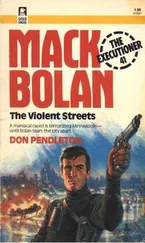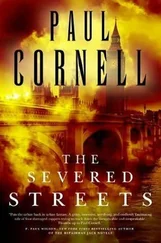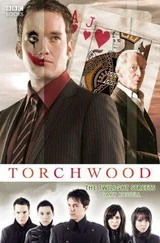The process continues with the removal of the breastplate and the examination of the internal organs. Linked together in the body’s central cavity, the organ tree is lifted out as a single entity and placed on the steel sinks at the other end of the room. A careful vivisection of the heart, lungs, liver and other organs is then conducted, with the pathologist checking for any signs of disease or deformity while continuing to follow wound paths through the affected organs. With the organs removed, the remaining wound tracks can be followed into the posterior tissue of the body, and projectiles that have lodged in those muscles can also be removed. Bullets and bullet fragments, a critical category of physical evidence, are of course handled with great care, and they are removed by hand or with soft implements that cannot scratch the outer surface and thereby interfere with later ballistic comparisons of rifling marks.
In the final phase of the internal exam, the pathologist uses the electric saw to cut the circumference of the skull, the top of which is then popped upward with a lever-like tool. Pulling from behind the ears, the skin of the victim’s scalp is then folded forward across the face so that any head wound can be tracked and the brain itself can be removed, weighed and examined for disease. For observers, the detectives included, this last stage of the autopsy is perhaps the hardest. The sound of the saw, the cranial pop from the lever, the image of the facial skin being covered by scalp-nothing makes the dead seem quite so anonymous as when the visage of every individual is folded in upon itself in a rubbery contortion, as if we’ve all been wandering this earth wearing dimestore Halloween masks, so easily and indifferently removed.
The examination concludes with a sampling of bodily fluids-blood from the heart, bile from the liver, urine from the bladder-to be used for toxicology tests that can identify poisons or measure alcohol and drug consumption. More often than not, a detective will request a second blood sample as well in order to identify blood at the crime scene or any bloodstained items that are seized in a later search warrant. Toxicology results take several weeks, as does neutron activation testing for gunshot residue, which is analyzed at the FBI lab in Washington. DNA testing, another aid to identification that was introduced in the late 1980s, can credibly match samples of the human genetic code using blood, skin or hair samples and has therefore become the new frontier for trace forensics. But the process is beyond the lab capabilities of both the medical examiner’s office and the Baltimore department. When relevant to a case and requested by a detective, samples are instead sent to one of a handful of private labs used by Maryland authorities, but the backlog can be as bad as six months-a long time to wait for critical evidence.
A single autopsy can take less than an hour, depending on the complexity of the case and the extent of the wounds or injuries. When it is finished, an assistant returns the internal organs to the chest cavity, replaces the brain and skull top and closes the incisions. The body is then returned to the freezer to await a funeral home’s hearse. The gathered evidence-blood samples, swabs, nail clippings, bullets, bullet fragments-is then marked and bagged for the detective, who will take it to the evidence control unit or the ballistics lab, ensuring a clear chain of custody.
By its very efficiency, the process manages somehow to become less and less extraordinary. But what still has emotional force for even veteran detectives is the autopsy room as a panoramic vision, a sort of Grand Central Station of lifelessness in which human bodies are at varying stops along the disassembly line. On a busy Sunday morning, the hallway outside the cutting room might be filled with eight or nine metal tables and the freezer may hold a half dozen more. To stand amid the overnight accumulation of homicides and auto accidents, drownings and burnings, electrocutions and suicides, overdoses and seizures-that is always a little overwhelming. White and black, male and female, old and young, all come to Penn Street with no common denominator save that their deaths are officially unexplained occurrences within the geographic confines of the Old Line State. More than any other visual image, the weekend display in the tiled room reminds a homicide detective that he deals in a wholesale market.
Every visit to the autopsy room reaffirms a detective’s need for a psychological buffer between life and death, between the horizontal forms on the gurneys and the vertical forms moving between the metal. The detectives’ strategy is simple and it can be presented as an argument: We are alive; you are not.
It is a philosophy unto itself, a religion worthy of its own rites and rituals. Yea, though we walk through the valley of the shadow of death, we are breathing and laughing and sipping coffee from a Styrofoam cup, while you are stripped bare and emptied of vital pieces. We are wearing blue and brown and arguing with the attendant about last night’s Orioles game, insisting that the Birds can’t win without another RBI man in the lineup. Your clothes are torn and soaked with blood and you are refreshingly free of all opinion. We are contemplating a late breakfast on company time; you are having the contents of your stomach examined.
By that logic alone, we are entitled to a little arrogance, a little distance, even within the close confines of the autopsy room. We are entitled to walk among the dead with a false confidence, with a deceitful wit, with the self-sustaining assurance that it’s still the greatest of chasms that separates us from them. We will not mock the shells of the dead, sprawled on their wheeled alloy cots; but neither will we humanize them, growing solemn and mortal at the very sight. We can laugh and joke and bear witness in this place only because we will live forever, and if we don’t live forever, we will at least manage to avoid leaving this vale as an unattended death in the state of Maryland. In the safety of our imagination, we will only depart in wrinkled skin and a soft bed, with a signed death certificate from a licensed physician. We will not be bagged and weighed and photographed from above so that Kim or Linda or some other secretary in the Crimes Against Persons section can glance at the 8-by-10 glossy and remark that Landsman looked better with his clothes on. We will not be split and spliced and sampled only to have a civil servant note on a government-issue clipboard that our heart was moderately enlarged, our gastrointestinal system, unremarkable.
“Table for one,” says an attendant, sliding a cadaver into an empty slot in the autopsy room. An old joke, but he, too, is alive and therefore entitled to an old joke or two.
Likewise for Rich Garvey, taking note of a rather well-endowed male cadaver: “Oh, my goodness, I’d hate to see that thing angry.”
Or Roger Nolan, noticing a random racial configuration: “Hey Doc, how is that the white guys got their tables right away and the black guys are all waiting in the hall?”
“I think this is one time,” muses an attendant, “when the black guys would rather see the white guys go first.”
Only on rare occasions is the veil lifted, with the living compelled to acknowledge the dead honestly. It happened to McAllister five years back, when the body on the metal table was Marty Ward, a narcotics detective killed in a Frederick Street drug front when a hand-to-hand sale went bad. Ward was Gary Childs’s partner back then and one of the most popular detectives on the sixth floor. McAllister was chosen to work that autopsy because someone in the unit had to do it, and the other homicide detectives had been closer to Ward. None of that made it easier, of course.
Читать дальше












